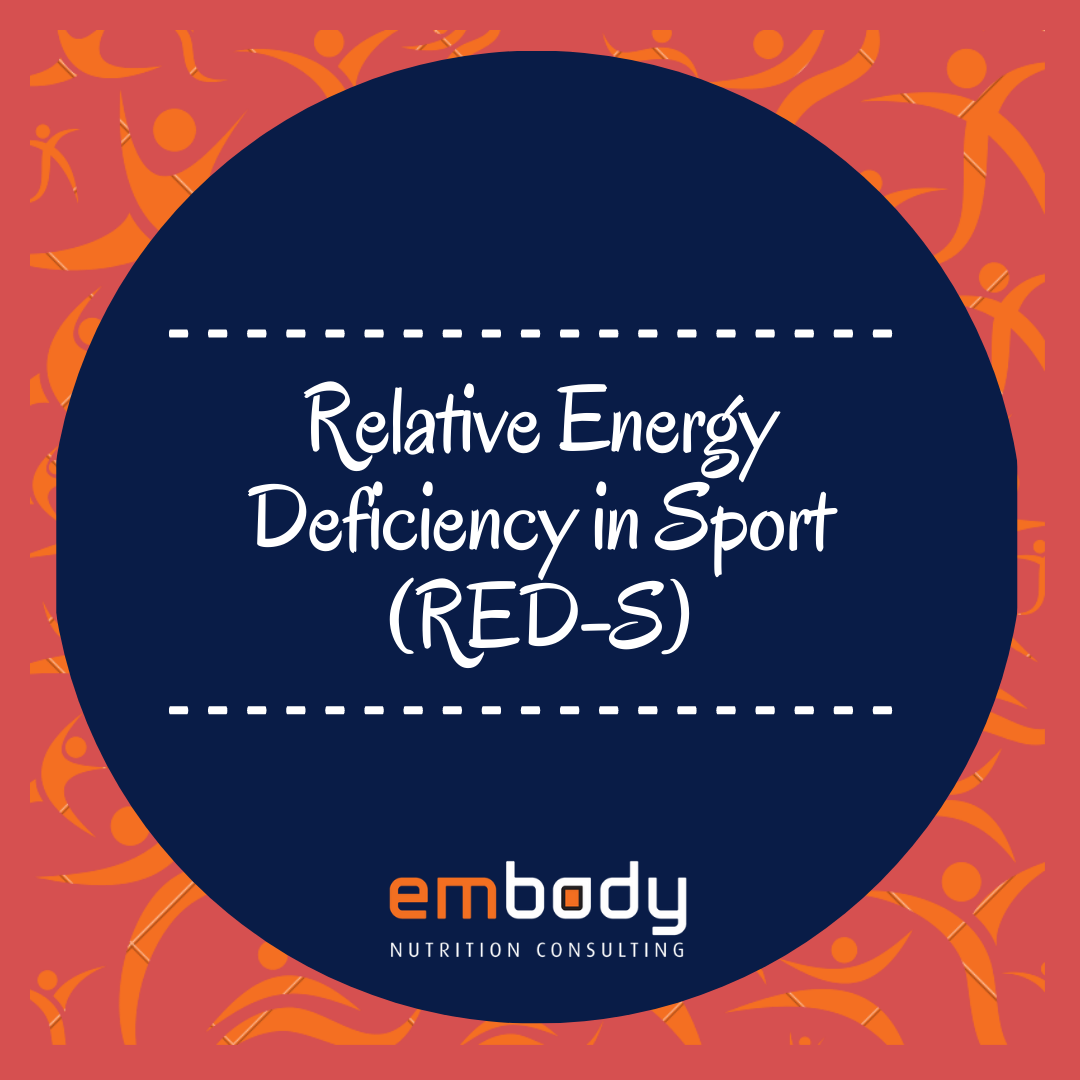What is it?
RED-S is a syndrome where the underlying problem is inadequate energy to support normal, healthy bodily functions. Some of these functions, including metabolic rate, protein synthesis, menstrual function, bone health, immunity and cardiovascular health, become compromised in athletes, which in turn effects both performance and health.
Low energy availability occurs through either a reduction in energy intake (from food) or from an increase in energy output (from training). Disordered eating has traditionally thought to be the cause for the syndrome however, it has been seen more recently that some athletes will have low energy availability due to a substantial increase in training load, without a subsequent increase in energy intake to match.
Many athletes have very healthy eating and exercise behaviours and will use some healthy and guided dieting as well as some more extreme, short term restrictive diets (think physique sport athletes for example). There are some athletes though that show an array of disordered eating issues which can range from distorted body image and abnormal eating behaviours, to diagnosed eating disorders such as bulimia nervosa and anorexia nervosa.
Disordered eating still plays a large role in the development of RED-S and it is critical that this is identified and treated as soon as possible.
Who does it effect?
RED-S effects both men and women.
Although it is still more prevalent in women, it has been identified that men are not exempt from low energy availability, particularly in weight sensitive sports where leanness and weight are important to performance or appearance.
RED-S does not only effect elite or professional athletes, but is common among sub-elite and recreational athletes as well.
Estimates vary a lot between the different sports, with numbers thought to be as high as 60-70% in sports such as dancing and marathon running.
What are the symptoms?
Amenorrhoea (loss of three consecutive periods) is one of the most common signs of low energy availability in women. A women will lose her period when her hormone levels are abnormal, her body fat stores are too low and she does excessive exercise. This can cause significant emotional stress as well as cause serious issues with conception and pregnancy.
RED-S can also have other serious short and long term consequences to an athletes health. Some of these include nutrient deficiency (anaemia), chronic fatigue and an increased risk of illness or injury.
As well as physiological impacts, low energy availability also has psychological impacts on an athlete which will be detrimental to performance and health. It has been shown that depression and anxiety can both cause low energy availability or disordered eating, as well as occur as a result of low energy availability.
Bone health is one of the other main consequences of RED-S. Peak bone mass occurs in women at 19 and men at 20 years old. The damage caused to the bones as a result of low energy availability may be irreversible. Changes in bone structure leads to an increased risk of stress fractures, which can be a sign on it’s own, of RED-S.
Where to get help?
RED-S is a complex syndrome and any athlete experiencing any of these symptoms will need a multidisciplinary team to aid in their recovery. This could include a GP/sports physician, Sports Dietitian, Sports Psychologist, physiotherapist and exercise physiologist.
If you are experiencing any of these symptoms of suffer from RED-S, please reach out for help.

